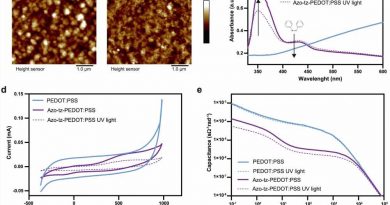Sugars and microbiome in mother’s milk influence neonatal rotavirus infection
Using a multidisciplinary approach, an international team of researchers from several institutions, including Baylor College of Medicine, reveals that complex interactions between sugars and the microbiome in human milk influence neonatal rotavirus infection. Reported in the journal Nature Communications, this study provides new understanding of rotavirus infections in newborns and identifies maternal components that could improve the performance of live, attenuated rotavirus vaccines.
“Rotavirus infection causes diarrhea and vomiting primarily in children younger than 5, with the exception of babies younger than 28 days of age, who usually have no symptoms. However, in some places, infections in newborns are associated with severe gastrointestinal problems. What factors mediate differences between newborns with and without symptoms are not clearly understood,” said first and corresponding author Dr. Sasirekha Ramani, assistant professor of molecular virology and microbiology at Baylor College of Medicine. “We began our investigation years ago by determining that a particular strain of rotavirus was associated with both asymptomatic infections and clinical symptoms in newborns.”
Ramani and her colleagues first looked for answers from the perspective of the virus. They investigated whether factors such as the amount of virus in newborns or the genome of the virus could be linked to the presence of symptoms in newborns, but did not find any connection between those factors. The researchers then posed the question from the perspective of the newborn. Are there factors in newborns that could explain why this virus infects neonates and why there are differences in clinical presentation?
In the lab, the researchers investigated whether components of the mother’s breast milk could inhibit infection of MA104 cells, a well-established model for rotavirus studies, with the particular strain of rotavirus they had identified in the neonatal nurseries in India. Unexpectedly, they discovered that specific sugars present in mother’s milk enhanced infection of cells in culture with the neonatal rotavirus strain.
“We were surprised by these results,” Ramani said. “Breast milk is known to enhance newborn protection against rotavirus infection and sugars in breast milk can reduce infectivity of other rotaviruses, but here we found the opposite for this particular strain of the virus.”
The researchers then went back to the field to determine whether they could validate the results they had found in the lab in a cohort of mother-infant pairs.
“We found that some of the same specific sugars in breast milk that increase infectivity of cells in culture are present in the milk of mothers of newborns with symptomatic infection,” Ramani said.
In addition, the researchers found an association between the microbiome in the mothers’ milk and gastrointestinal symptoms in newborns, which prompted new questions, Ramani explained. How does the microbiome contribute to the differences in gastrointestinal symptoms?
“What is most interesting to us is that these sugars also increase the replication of the rotavirus attenuated, live vaccine that is similar to the neonatal virus that we are studying,” Ramani said. “Enhanced viral replication can potentially translate into a more effective immune response against the virus, which would lead to better protection for the infant. This is something we want to explore in the future because it could illuminate strategies to improve the effectiveness of rotavirus vaccines in parts of the world where they do not do well.”
“One of the most important things to us is that these unexpected findings are tightly linked to public health,” said co-author Dr. Mary K. Estes, Cullen Foundation Endowed Professor Chair of Human and Molecular Virology at Baylor College of Medicine and emeritus founding director of the Texas Medical Center Digestive Diseases Center. “The multidisciplinary nature of our team of researchers has allowed us to answer questions about how this unique rotavirus strain infects neonates, confirm the findings in the field and open possibilities to improve the effectiveness of rotavirus vaccines where they are needed the most.”
“These discoveries are a prime example of the urgent need to improve our understanding of the composition and variation in breast milk components,” said co-author Dr. Lars Bode, associate professor of pediatrics and director and chair of Collaborative Human Milk Research at the Larsson-Rosenquist Foundation Mother-Milk-Infant Center of Research Excellence at the University of California, San Diego. “Understanding how rotavirus and other pathogens can take advantage of breast milk components will guide the development of new vaccination strategies to stay ahead in the host-pathogen arms race.”
Other contributors to this work include Christopher J. Stewart, Daniel R. Laucirica, Nadim J. Ajami, Bianca Robertson, Chloe A. Autran, Dhairyasheel Shinge, Sandya Rani, Sasirekha Anandan, Liya Hu, Josephine C. Ferreon, Kurien A. Kuruvilla, Joseph F. Petrosino , B. V. Venkataram Prasad and Gagandeep Kang. The authors are affiliated with one or more of the following institutions: Baylor College of Medicine; Newcastle University; University of California, San Diego; Christian Medical College, India and Translational Health and Science Technology Institute, India.
This work was supported by the National Institutes of Health (grants R01AI105101 and AI36040) and by a pilot award from the Center for Metagenomics and Microbiome Research. The authors also gratefully acknowledged the support of the Family Larsson — Rosenquist Foundation.
Source: Read Full Article



